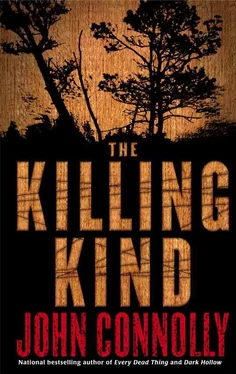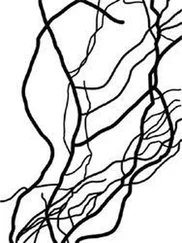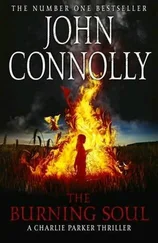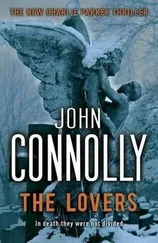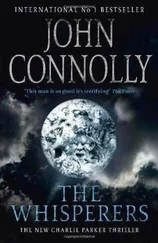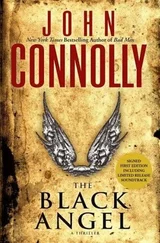“There she is,” said Adams. His finger pointed to a small green dot on the radar screen while, simultaneously, the half-seen needle of the mast joined a dark spot on the horizon. Beside me, Ramos removed his Glock.40 from its holster.
Slowly the shape acquired definition: a white seventy-footer with a tall mast, drifting on the waves. A smaller boat, the lobster fisherman out of Portland that had first spotted the yacht, shadowed it from a distance. From the north came the sound of Marine 1 approaching. The two boats always responded to a call together for safety reasons.
Marine 4 turned to the south and came around so that it was on the yacht's eastern side, its lines silhouetted before the failing sun. As the Whaler circled it, there was blood visible on the deck that even the salt water hadn't managed to fully remove, and the wood was pitted with what looked like bullet holes. Close to the bow of the boat was a black scorch mark where a flare appeared to have ignited on the deck.
And at the top of the mast, partially concealed by the furled sail, a body hung with its arms outstretched and tied to the crossbeam. It was naked but for a pair of white boxers, now stained black and red. The legs were white, the feet tied together, a second rope around its chest lashing it to the mast before heading down taut at an angle, tied off to one of the rails. The body was scorched from the stomach to the head. Most of its hair was gone, its eyes were now dark hollows, and its teeth were bared in a rictus of pain, but still I knew that I was looking at the remains of Jack Mercier, hanging dark against the reddening sky like a black flag set in the firmament.
The Whaler hailed the yacht and, when no response came, drew up off the port side while a young crewman climbed on board the Eliza May, killed the engine, and tied Marine 4 off. Ramos and MacArthur joined him, pulling on protective gloves before they stepped shakily on board.
“Detectives,” the crewman called from the cockpit. They headed toward him, trying not to touch anything with their hands as the boat rocked gently in the waves. The crewman pointed to where a long, dark trail of blood followed the steps down. Someone had been dragged, dead or dying, belowdecks. MacArthur knelt down and examined the steps more closely. The end of a long, blond hair curled out of the blood. He rummaged in his pockets and removed a small plastic evidence bag, then carefully lifted the hair and stored it away.
“You stay here,” he said to the crewman as Ramos moved behind him. From the decks of the two police boats, guns were trained on the other two of the yacht's three entryways belowdecks. Then MacArthur took the lead, using the very edges of the steps, the only parts not covered in blood, to make his way below.
This is what they found.
There was a small, dark passageway, with the head to the immediate right and a quarter berth to the left. The head was empty and smelled of chemicals; a shower curtain was pulled back, revealing a clean white shower stall. The quarter berth was unoccupied. The passageway was carpeted, and the material felt wet beneath their feet as they walked, blood bubbling up from between the fibers. They passed the galley and a second pair of facing doors that led into two sleeping compartments, both fitted with small double beds and closets wide enough to take only two pairs of shoes set side by side.
The door leading into the main salon was closed and no sounds came from behind it. Ramos looked at Wallace and shrugged. Wallace retreated back into one of the bedrooms, his gun in his hand. Ramos moved into the other and called out: “Police. If there's anybody in there, come out now and keep your hands up.”
There was no response. Wallace stepped back into the passage, reached for the handle of the door, and keeping his back against the wall, slowly pulled it open.
There was blood on the walls, on the ceiling, and on the floor. It dripped from the light fixtures and obscured the paintings between the portholes. Three naked bodies hung upside down from the beams in the ceiling: two women, one man. One woman had gray blond hair that almost touched the floor; the other was small and dark. The man was bald, apart from a thin circle of gray hair, which was mostly soaked red with his blood. The throat of each had been cut, although the blond also had stab wounds to her stomach and legs. It was her blood on the steps and soaked into the carpet. Deborah Mercier had tried to run, or to intervene, when they took her husband.
The smell of blood was overpowering in the confined space, and the bodies swayed and bumped against one another with the rocking of the boat. They had been killed facing the door, and the spray from their arteries had hit only three sides of the cabin.
But there was still some blood behind them. It formed a pattern that could be seen between the moving bodies. MacArthur reached forward and stopped the swaying of Deborah Mercier's corpse. She hung to the left of the others, so that by stilling her the others also ceased to move. She was cold, and he shuddered at the touch, but now he could see clearly what had been written behind them in bright, red arterial blood.
It was one word:
SINNERS
WHAT HARM CAN IT DO?
Jack Mercier's words, spoken on the day that he first asked me to look into Grace's death, came back to me as I learned of what had been found in the main salon of the Eliza May, its decks stained with red and Jack Mercier's crucified form hanging from the mast. They came back to me as I saw the pictures of the yacht in the following day's papers, smaller photographs beside it of Jack and Deborah Mercier, and of the attorney Warren Ober and his wife, Eleanor.
What harm can it do?
I recalled myself sitting, wet and shivering, in the bow of Marine 4, surrounded by the cries of gulls as arrangements were made to tow the Eliza May back to shore. I was there for over two hours, the lineaments of Jack Mercier's body slowly fading and growing indistinct as evening fell. MacArthur was the only one who spoke to me, and then only to detail the discovery of the bodies and the word written in blood upon the wall behind them.
Sinners.
“The Aroostook Baptists,” I said.
MacArthur grimaced. “Little early for a copycat, don't you think?”
“It's not a copycat killing,” I answered. “It's the same people.”
MacArthur sat down heavily beside me. Seawater swirled around his black leather shoes. “The Baptists have been dead for over thirty years,” he began. “Even if whoever killed them was still alive, why would he-or they-start again now?”
I was too tired to go on hiding things, much too tired.
“I don't think they ever stopped killing,” I told him. “They've always been doing it, quietly and discreetly. Mercier was closing in on them, trying to put pressure on the Fellowship through the courts and the IRS. He wanted to draw them out, and he succeeded. They responded by killing him and those who were prepared to stand alongside him: Yossi Epstein in New York, Alison Beck in Minneapolis, Warren Ober, even Grace Peltier.”
Now, their countermeasures were almost complete. The word on the wall indicated that, a deliberate echo of the slaughter with which they had begun and that had only recently been revealed. There was now one final act left to perform: the recovery of the missing Apocalypse. Once that was accomplished they would disappear, vanishing below the surface to lie dormant in some quiet, dark cavern of the honeycomb world.
“Who are they?” asked MacArthur.
“The Faulkners,” I replied. “The Faulkners are the Fellowship.”
MacArthur shook his head. “You're in a shitload of trouble,” he said.
Читать дальше
